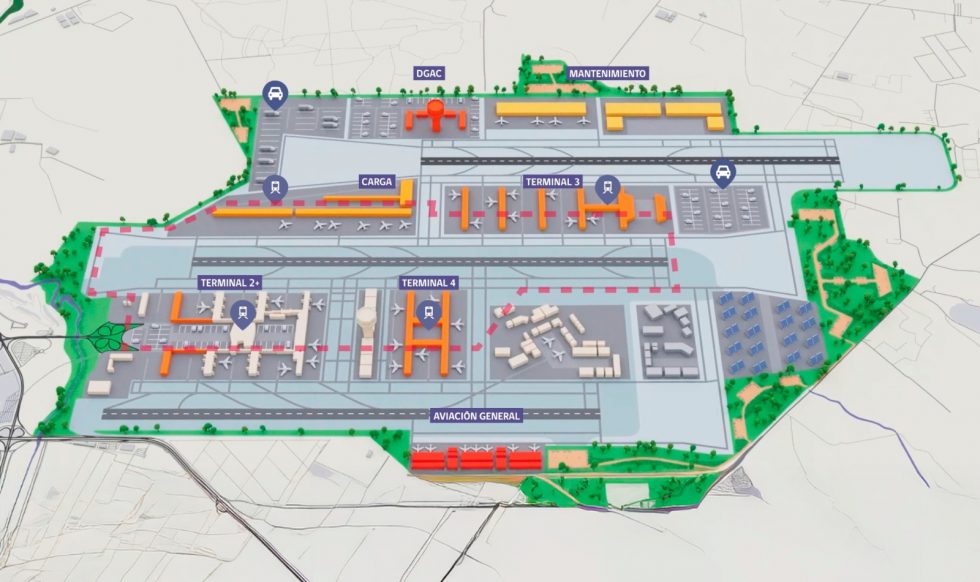Chile unveils $4 billion expansion plan for Santiago Airport to triple capacity by 2050
Chile to invest $4 billion to triple Santiago Airport’s capacity with new terminals, a third runway and expanded infrastructure.
Chile's Ministry of Public Works (MOP) has unveiled an ambitious infrastructure plan to expand Arturo Merino Benítez International Airport (SCL) in Santiago. The project, part of a newly updated master plan, involves a $4 billion investment between 2035 and 2050, aiming to triple the airport's passenger capacity and increase operational efficiency.
Presented by Public Works Minister Jessica López, the initiative includes the construction of a third runway, a third passenger terminal, expanded cargo facilities, three new access roads, and a light rail system to connect the airport internally and link it to the Santiago Metro network.

According to projections, these upgrades will allow the airport to handle up to 84 million passengers per year and support 125 aircraft operations per hour, tripling current capacity levels.
Territorial expansion and multimodal connectivity
The master plan outlines the expansion of the airport’s footprint from 1,070 to 2,368 hectares, mostly extending northwest into the Pudahuel district and, to a lesser extent, Lampa. The built area is expected to grow from 380,000 m² to over one million, while aircraft parking positions will increase from 56 to 152.
The cargo terminal will be relocated to make space for additional passenger boarding piers, while new facilities for aircraft maintenance and the Civil Aviation Authority (DGAC) will be built west of the future runway. General aviation operations will move to the east of the existing runway system.

Connectivity improvements include three new access roads—from El Noviciado (west), Lo Boza (north), and a dedicated truck route from the south. A light rail shuttle will facilitate movement between terminals and integrate with Santiago’s Line 7A extension.
Sustainable design and urban integration
Sustainability is a key element of the expansion. The project will meet CES green building certification standards and incorporate renewable energy, low-emission technologies, and waste reduction strategies. A surrounding green belt with parks, trails, and community spaces is also planned to improve integration with nearby neighborhoods.
The preliminary design phase is already in tender, with the consultancy phase running through 2030 and including environmental impact assessments. Construction is expected to begin in 2035, with completion targeted by 2050.
MOP officials emphasized that, given sustained air traffic growth—averaging 10% annually since 2010—expanding the current airport is more efficient than building a second facility. The project seeks to address long-term demand while optimizing operational, financial, and social returns.

/https://aviacionlinecdn.eleco.com.ar/media/2025/04/aeropuerto_de_santiago.jpg)
Para comentar, debés estar registradoPor favor, iniciá sesión